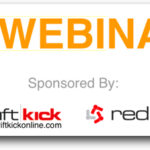I promised the good student affairs folk of the Penn State system that I would write up a draft outline of a tech plan for a state wide student leadership event. I delayed a bit, so that we could finish up this new sachat platform – I think it’s an important example of the goal.
This will be a picture of what is possible, and the benefits, complete with notes. While I will aim at “reasonable and doable,” the degree of difficulty will vary by campus. This certainly isn’t THE way to do this, it is a draft plan to pick apart and play with.
This plan isn’t about just getting something up or what can be done in an hour, this plan is about creating a cost effective community that will help your leaders be successful.
Goals:
1) Build a statewide community of student leaders. Use the in person experience as a catalyst for building an always-available community online.
Notes: Many leadership conferences focus on skills. “Sit in a Educational Session and learn what you need to know, then go do it.” While skills matter, engagement is more important. Community leads to engagement, conversation, and retention.
Student leaders often face frustration on their own campus. Most of their peer students just don’t care as much. Giving them easy access to peer student leaders, who do care as much, will help them maintain their own motivation while building their skills.
2) Teach and encourage student leaders to share their model of high education involvement and education via social media and the internet.
Notes: Sharing models of engagement is good for the school (great content for the web, first year experience, etc.) and for the student – they have a positive digital identity that will help them find a job.
The Plan and Steps:
1) Use a public collaboration space to plan the events of the conference. I recommend wikispaces.com Start with the free version.
Here’s a great template from an education technology conference happening next weekend.
Notes:
– The point of using a wiki without a password vs. google docs is that you are modeling for the students how to plan in the open. If they begin to plan their events on campus in the open, they will, in turn, be modeling the various stages of involvement for other students around campus. This is a very good thing.
– Wikis are not magic work solvers. While they do open up the possibility of community members contributing some effort, don’t count on it. It will likely be the same 3 people that always to 90% of the work, plus one surprise over achiever that will come out of no where and be very helpful.
– Wikis will make it easier for the planning group, and early interested students, to get on the same page. Compare it to sending lots of emails, where the information is in small pieces spread everywhere. Wikis bring it together.
– Click on the “Notify Me” tab on the top of the page to get change notices to your email. This makes it easy to stay up on things.
2) Set up a Facebook Group (not a fan page), put a link to it on the wiki.
Notes:
– I feel conflicted about this step. Facebook Groups don’t last, as a general rule. Even with student groups, most get set up and forgotten.
The goal here is to establish a longer term platform. If Facebook groups typically die, does that mean any lines of connection or artifacts (pictures) burried within the Facebook groups are taking away from energy that could have gone into something else? I’m not sure. It’s close, but I think not. I think it’s worth trying both and seeing where the energy goes. It might just be both. Facebook has changed the design now, to be more stream oriented, and the message boards now allow threaded messages and replies in emails. All of this adds up to:
maybe Facebook groups are worth another shot.
– At the very least, it’s worth including in the organization process to give students a place to post their pictures. Pictures are one of the most important artifacts of community. Profile pictures, pictures of fun, pictures of people – it’s one of the best online reinforcement of feelings that we have.
3) Set up a twitter account specifically for penn state leaders. Something like twitter.com/pennslead
4) Spend 30 minutes learning Mailchimp by watching their howto videos.
Notes:
– Reach out to the attendees as soon as you have a list. Make it a goal of having a preliminary list as quickly as possible. The first email should be very short “We’re excited for the conference! Sign up for the facebook group here or follow us on twitter.”
– If you just want to use Mailchimp for the run up to the conference, it will be free. If you fall in love and want to use all
the features over a longer period (to send lots of emails), it’s $30 a month. The tracking alone is worth it. If you’re not sure about Mailchimp, check out this Mailchimp vs Sendgrid comparison to see what it’s all about.
– Mailchimp will allow you to see who opens the email, and who clicks on the email. This is one tool that have a number of benefits for a variety of people, whether you are part of a growing business or a student. For businesses in particular, take a look at https://www.salesforce.com/solutions/small-business-solutions/integrations/mailchimp-crm-integration/ to help improve your knowledge. But it doesn’t hurt to learn something new.
Send a follow up email with a different subject line within two days to everyone that didn’t open the first email
(Mailchimp makes this easy.)
– Mailchimp will be one of three communication methods you will use. You will also use Facebook and Twitter (depending on how many students follow- I would expect 10% or so.) Twitter will get you to the cellphones if the student wants it, now you have Email, Facebook, and Text Messaging covered. This makes you awesome.
5) Now look at the students that have joined the Facebook group and how many have followed on twitter. These are your leaders among leaders. They are your biggest enthusiasts. Send them a personal email asking them to get involved in planning the conference. Send them to the wiki with a specific task and see who follows through.
Notes:
– Again, two things are happening here simultaneously – you are getting the work done, but you are also teaching. Think of this process as an ed session in and of itself. If this sounds like a lot of time – and it’s a couple of hours – ask yourself how much time you would spend prepping and delivering an ed session for the purposes of educating the
students. Why not teach them online? And doing the work with be teaching yourself as well.
6) With the help of the students, fingers crossed you’ll find some techies, build a collaborative place online to put content up from the conference when it is happening. The goal is to generate a lot of content at the conference and then keep it going afterwards. Whatever method you decide on below, you will use the mailchimp interface to
notify students about it before the conference and after the conference.
There are two main options for pulling on the content together in one public place:
A) A posterous blog,
where lots of people can email pictures and words. This creates one central public blog. Students with smart phones can email pictures directly from their seats to this blog.
Notes:
– This is the easiest and fastest platform to set up. It has it’s own comment system which works well.
– Every student that emails in content will get posted on the common group blog as well as creating their own personal blog. Apologies if this makes your head hurt, it’s an important point.
– Everything the student emails to
B) An aggregated Wordpress blog like the new student affairs collaborative platform.
Notes:
– This requires the selection of a common word that students would attach to their blogs, pictures, or tweets. Use something short and easy to remember. Best if it is the same as the twitter account. Like #pennslead
– We went to this system because we wanted to aggregate twitter and blogs in the same place using one common tag. We wanted student affairs professionals to have their own blogs where they wrote about what ever they wanted. When they wanted to add their content to the collaborative space, they simply add “#sachat” to the blog or tweet and it shows up on the central blog.
– This system is more flexible and allows participants to use whatever they are already using (instead of asking everyone to use posterous.) More flexibility for users requires a little more investment in the platform. You would hire someone to build this using Word Press. It’s not a huge expense, but expect about $1000 up front and $200 a year to keep it going.
– This system would work with whatever blogs your students were using. So you could encourage them to set up their own blog on penn state’s system, and then pull together only the content with the tag #pennslead.
– Notice that this system works. We’ll be posting more on this in the future, but the student affairs blog is a great and growing community. It’s a perfect example of exactly what we would want to see for the student leaders of any state.
7) If you use Wordpress, take the RSS feed and add put it into mail chimp as a RSS -> Email Campaign. You can
set this to go out every Wednesday morning if their is new content on the central blog. (posterous has it’s own email notification settings that students will control on their own.)
Notes:
– To build the community, you’ll need both content and notification of the content, until it is a habit. This will take a while.
– Follow up with those students you found in step 5. Ask them to create content. Tell them they are special (because they are) and you need their help in creating this place for them to connect and learn online.
– As staff members, you can keep putting content into the blog and sending it out. The goal of course, is to transition from staff to students over time. Keep pushing them, it will happen.
– You will have lots of assessment to show anyone. Mailchimp will give you open rates and click through. You’ll know traffic to the blog, new content, and comments. Share these stats with the group to keep them motivated.
Fire away with comments and questions.




